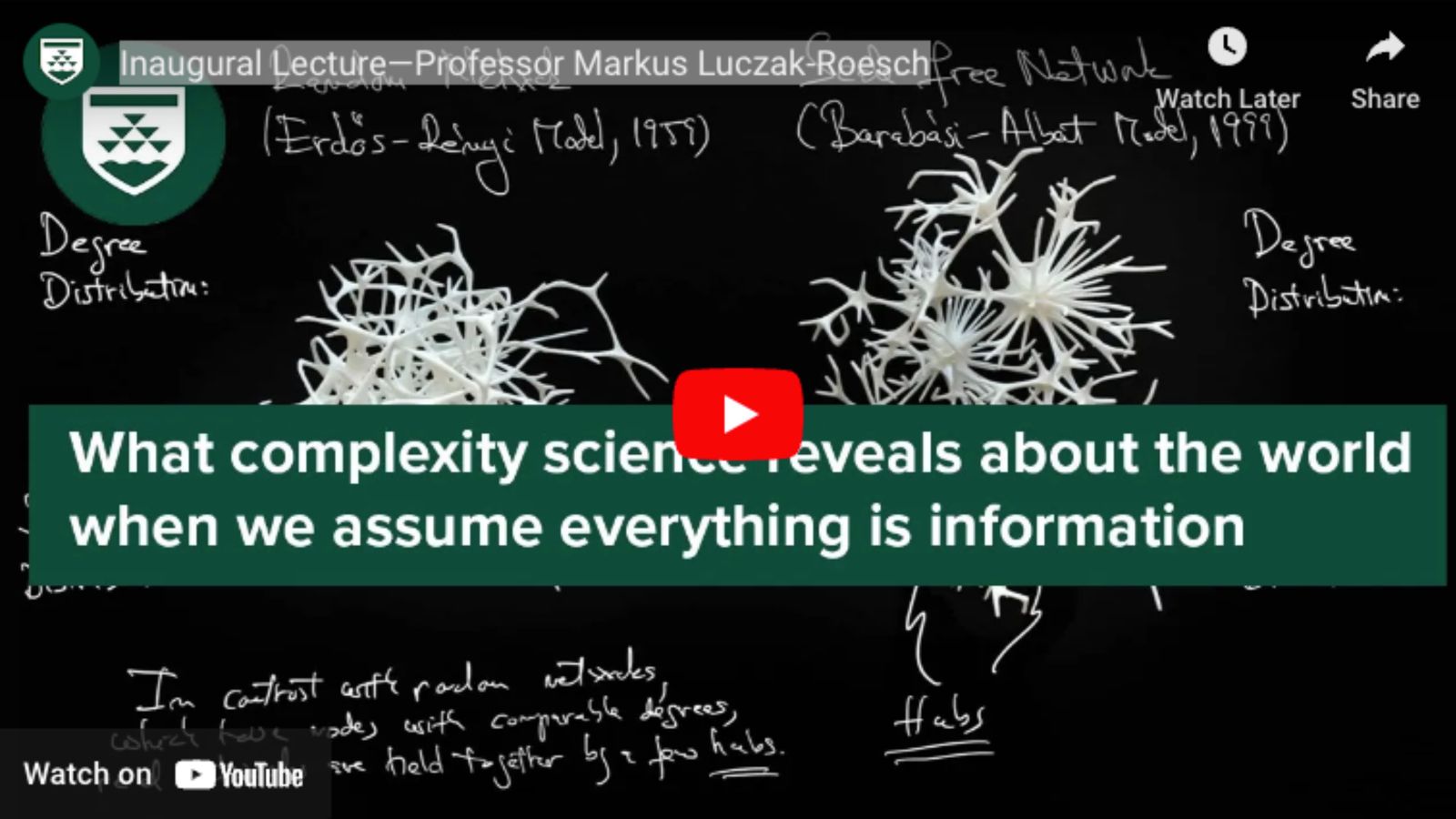The Chair in Complexity Science approaches the urgent and perplexing questions of our time by using modelling and analytical tools to uncover the complex dynamics, interdependencies, and feedback mechanisms of our world.
Our post-disciplinary approach to investigating complexity brings together methods from physics, mathematics, computer science, cognitive science, social science, and the humanities. We gain entirely new perspectives on a wide range of domains—from government, health, the economy, to the infosphere—to understand and improve life in Aotearoa and beyond.
Complexity beyond pure reason
In his inaugural lecture as Professor, Markus Luczak-Roesch combines the lens of complexity science with his account as a first-generation university student.
Watch the video

Exploring emergence
Professor Markus Luczak-Roesch talks about his research into developing a law of emergence to allow scientists to understand rare coincidences that occur within complex systems.
Watch the videoOur research
Professor Markus Luczak-Roesch and his team of researchers study fundamental and applied questions in complexity science.
Explore our research
Research highlights

The natural world
This research uses information network analysis to understand complex behaviours and activities in the natural world, like climate change.

Culture and language
This research analyses data surrounding language and culture.

Time, coincidence, and acausality
This research stream explores a novel method to study multimodal data in the time dimension using information networks.
About Te Maheno
The Chair in Complexity Science site has been gifted the te reo Māori name of Te Maheno. This means to be untied, to release.
According to Māori oral tradition, Te Ihonga was a deity who could tie intricate knots. The resulting entanglements became known as ‘te ruru a Te Ihonga’ (the ties of Te Ihonga). They were regarded as so complicated and secure that only people who knew Te Ihonga’s secret could untie them.

